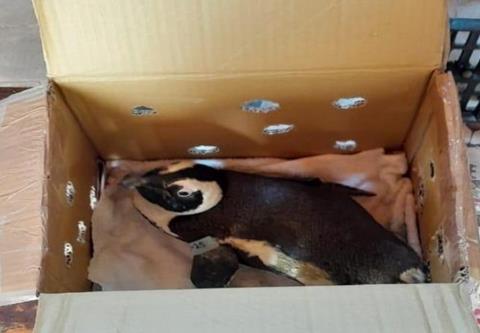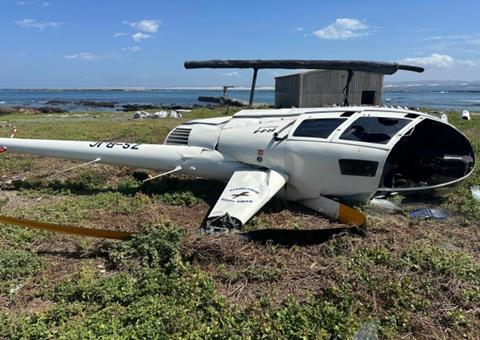South African investigators determined that the pilot of the Robinson R44 helicopter did not assess the risk of transporting live penguins in the cockpit before the aircraft crashed shortly after lift-off.
The accident on January 19th was not injured either of the pilot, three passengers and five Penguin residents, but the helicopter was significantly damaged.
Experts flew to Bird Island off the Eastern Cape to conduct an aerial survey. After the investigation was completed, R44 landed on the island, and experts requested that the penguins be returned to Port Elizabeth's Stunman airport.
According to an investigation by the South African Civil Aviation Authority, the pilot agreed to the request and the penguins were placed in cardboard boxes.
“The pilot conducted a flight risk assessment,” he adds. “However, he omitted the inclusion of penguin carriages on board.”

A passenger in the front left seat states that he placed a box containing the penguin on his lap and secured it with his hand.
After the pilot started the engine and advanced power to 103RPM, the helicopter was lifted.
However, during the transition about 15m (50 feet) above the ground, the cardboard box slid down to the right and fell onto the cyclic pitch control lever.
“As a result, the cyclic pitch control lever moved to the far right position,” the inquiry said. “The helicopter rolled to the right and the pilot couldn't recover over time.”

Its main rotor blade hit the ground, causing the helicopter (ZS-RJC) to rest on the right board side, causing severe damage.
“None of the residents were injured,” the investigation said. “The penguins were also unharmed.”
The transport of penguins in cardboard boxes is “not carried out in accordance with” civil aviation regulations governing flight operations of helicopters.
The lack of a suitable wooden frame for the penguins was inappropriate, causing hazardous situations and assessments of potential dangers such as cargo shifts should have been made.


